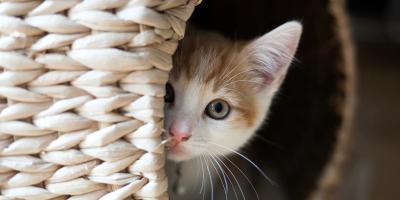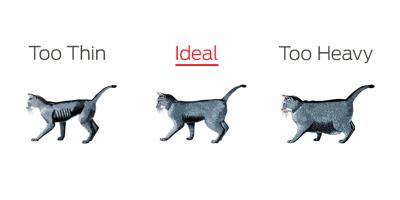
Pets have spent all summer playing and bonding with their children. When the time comes to go back to school after summer vacation, kids aren’t the only ones experiencing those back-to-school blues.
Big changes in routine, like the transition from summer break to the school year in the fall, can cause separation anxiety in dogs and cats.
In fact, it’s estimated that 20 to 40 percent of cats and dogs taken to veterinary behavioral specialists are affected by separation anxiety.2
Signs of Separation Anxiety in Dogs & Cats
If your pet has separation anxiety, you may notice some behavioral changes. Purina veterinarian Dr. Kurt Venator says to watch for the following signs:
- Improper urination or defecation in the house not associated with puppy or kitten training
- Excessive barking or howling
- Excessive chewing or other destructive behaviour in the home
How to Ease Separation Anxiety in Dogs & Cats
1. Create a Routine
Family pets benefit from routines just as much as their parents and children. Leaving and returning at the same time every day will help your four-legged family members adjust to the changes they’re experiencing and reduce your dog or cat’s separation anxiety.
2. Schedule Time for Play & Exercise
Schedule designated play times for your cat or dog each day. “This is where appropriate treating comes into play. You want to reward the good behaviors and discourage the bad behaviors. A treat here or there (during playtime), along with verbal praise, can go a long way,” says Venator.
Taking your dog for a walk or playing an interactive game with your cat before you leave for the day is another calming strategy. After exercise, pets are usually ready for a nap, which creates the perfect segue for you to leave.
3. Provide Some Background Noise
People who turn the TV on for their dogs or cats when they leave the house are sometimes considered “crazy pet parents,” but it’s good advice for treating separation anxiety in dogs and cats.
Playing music, leaving the TV on and even turning on an audiobook or podcast can provide them with some engagement and distraction. Plus, the sound of other human voices can make pets feel less alone.
4. Try Stimulating Puzzles & Games
Puzzle feeders are a great way to reduce anxiety and keep your pet mentally stimulated. Pour half of their recommended daily amount of food into the puzzle feeder each morning and then refill each evening. Your dog or cat will spend the day busy and engaged, which can ease feelings of anxiety.
Other options are to hide small portions of dry cat or dog food and leave them in bowls around the house.
“Measure out the amount you want to feed every day and then divide it into smaller portions hidden around the house,” says Purina veterinarian Dr. Zara Boland. This hide-and-seek game is particularly beneficial for cats, as it spurs their hunting instincts and keeps them busy and active throughout the day.
5. Remain Calm & Confident
You’re the pack leader, so your children and pets will follow your lead. If you prolong goodbyes, you’re more likely to spur those feelings of separation anxiety in your pets.
Instead, keep goodbyes short and sweet each time. Your pets (and children) will follow suit. If your pet (or you) struggle with this, try saying goodbye with lots of petting and praise as much as 10 to 20 minutes before you leave. Then, when the time comes to leave, you can go without feeling bad, because you’ve already said goodbye.
If you have to leave suddenly and don’t have time for a walk or to create a game for them to play while you’re away, try giving them a favourite toy to keep them stimulated.
By following the above tips, you can ease your cat or dog’s separation anxiety symptoms and make them feel more comfortable being home alone.
Sources:
Related articles



